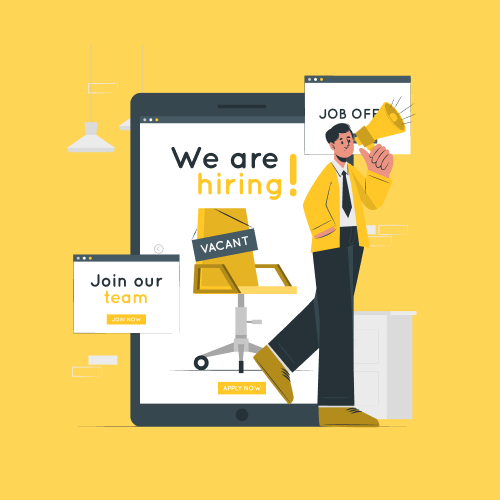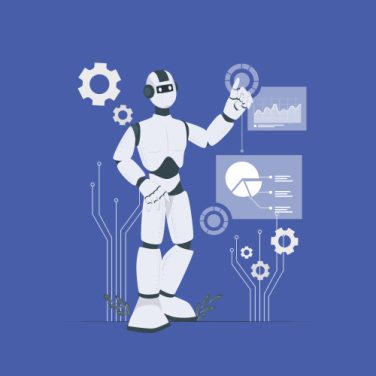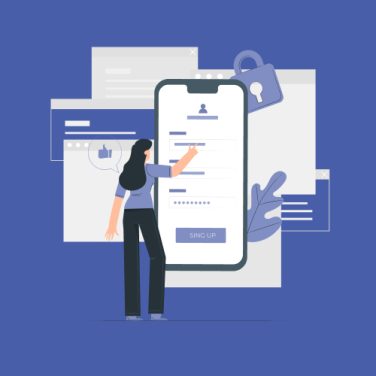This whitepaper provides a high-level overview of how Artificial Intelligence (AI) in recruitment can empower HR teams to transform talent acquisition.
Readers will discover key ROI benchmarks, adoption rates, and actionable templates that support an AI-driven approach across every hiring stage, with MiHCM’s suite positioned as the core technology enabler.
Why AI now?
- Recruitment workflows require data-driven automation to meet growing talent demand.
- Early adopters report up to 50% reduction in time-to-hire versus traditional processes.
- A whitepaper offers curated templates for rapid integration and measurable gains.
- MiHCM solutions power seamless candidate screening, predictive matching, and bias detection.
Market adoption of AI in recruitment and selection has surpassed 65% in enterprise organisations, with ROI often realised within six months of deployment. This comprehensive resource bridges the gap between strategic vision and tactical execution, ensuring HR directors can confidently scale AI capabilities.
Internal links, such as our Ultimate Guide to AI in Recruitment, will extend learning while driving deeper insights.
Market trends and data: State of AI adoption and ROI
| Company Size | AI Adoption Rate | Avg. Time-to-Hire Reduction |
|---|---|---|
| Small (1–100) | 45% | 30% |
| Mid (101–1,000) | 60% | 40% |
| Enterprise (>1,000) | 75% | 50% |
ROI by industry
- Technology: 55% faster hires; cost savings up to 20% per hire.
- Financial Services: 60% adoption; average cost-per-hire reduction of 18%.
- Healthcare: 50% adoption; time-to-fill down by 35%.
Emerging technologies
Generative AI optimises job descriptions by analysing performance data and candidate feedback. Chatbots powered by natural language models handle candidate outreach, Q&A, and scheduling queries around the clock.
These tools integrate with MiHCM Enterprise and SmartAssist, ensuring candidate data synchronises with your core HRIS.
Key insights
- Companies using AI see a 2x increase in qualified candidate pipelines.
- Bias-free algorithms improve diversity metrics by 15%.
- Integration with broader HR systems amplifies workforce analytics capabilities.
For deeper analysis on adoption rates, visit how many companies use AI in hiring.
This section showcases the business case for investing in AI in recruitment and selection, providing HR leaders with the data needed to justify AI budgets and technology evaluations.
Core benefits: Why AI is transforming recruitment
Four primary benefits that drive modern talent strategies:
- Data-driven decision making: Automated analytics remove guesswork, providing real-time insights into candidate engagement, source effectiveness, and pipeline health.
- Reduced bias: AI-driven candidate screening and matching rely on objective performance indicators, minimising unconscious bias across resume evaluations and interviews.
- Predictive analytics: Advanced models forecast candidate success probabilities, time-to-fill metrics, and turnover risk, enabling proactive workforce planning.
- Enhanced candidate experience: 24/7 AI-powered communication via chatbots and personalised status updates boosts satisfaction and employer branding.
- Scalability: High-volume recruitment processes maintain consistent quality as AI algorithms process thousands of applications simultaneously.
By leveraging MiHCM solutions, organisations can automate CV parsing and resume ranking at scale while maintaining compliance with regulations, enhance onboarding workflows by generating tailored training schedules and automated document collection, and reduce manual tasks for HR teams.
These capabilities align with the core benefits identified here, ensuring an end-to-end solution that transforms both talent acquisition and the candidate journey.
For HR directors and talent acquisition managers, implementing an AI integration plan based on these benefits supports faster hiring cycles, higher quality-of-hire, and measurable ROI from your AI in recruitment and selection investments.
High-ROI use cases: Where AI delivers the greatest impact
| Use Case | Description | Benefit |
|---|---|---|
| Automated Resume Screening | AI parses and ranks CVs based on skills, experience, and cultural fit. | Seamless, bias-free candidate screening and matching |
| Predictive Matching | Algorithms score candidates against role profiles for optimal fit. | Improved recruitment efficiency through analytics |
| Interview Coordination | Chatbots schedule interviews, send reminders, and handle rescheduling. | Faster time-to-hire with data-driven workflows |
| Dynamic Offer Optimisation | AI evaluates market data and candidate preferences to suggest optimal offers. | Improved recruitment efficiency through analytics |
These high-ROI use cases illustrate how feature-rich AI tools directly address common recruitment pain points.
Leveraging MiHCM’s suite ensures seamless integration with existing HRIS, delivering data-driven workflows that accelerate hiring and enhance candidate quality.
Building your AI integration plan: Framework and best practices
Step 1: Define Objectives & KPIs: Establish clear goals such as reducing time-to-hire by 30% or increasing diversity metrics by 20%. Align AI objectives with broader HR and business targets.
Step 2: Data Preparation & Privacy: Audit existing candidate data for completeness and accuracy. Implement data labelling protocols and ensure GDPR and local data privacy compliance.
Step 3: Vendor Selection & Pilot: Evaluate vendors based on integration capabilities, model transparency, and compliance features. Run a pilot focusing on a single use case such as resume screening to validate performance and ROI.
Step 4: Governance & Training: Form an AI governance committee including HR, legal, and IT stakeholders. Develop training programmes for recruiters on interpreting AI insights and maintaining human oversight.
Step 5: Full Rollout & Continuous Improvement: Scale AI tools across hiring stages, integrating with MiHCM modules. Monitor KPIs and conduct quarterly bias audits. Refine algorithms using ongoing performance data.
This framework guides HR directors through the end-to-end AI integration journey, ensuring measurable outcomes and sustainable adoption.
Legal and ethical guidelines
Ensuring compliance and fairness:
- GDPR compliance: Obtain explicit candidate consent for data processing and ensure data subject access requests.
- EEOC guidelines: Regularly review AI output for adverse impact across protected classes.
- Emerging AI regulations: Track requirements under the EU AI Act and California Consumer Privacy Act.
Bias audits: Implement methodologies such as disparate impact analysis and synthetic candidate testing to detect algorithmic bias. Schedule audits quarterly and document remediation steps.
Transparent AI use:
- Inform candidates when they interact with chatbots or automated systems.
- Provide clear explanations of AI-driven decisions in rejection and offer communications.
Human oversight best practices: Designate review stages where recruiters validate AI recommendations. Maintain logs of AI decisions and manual interventions to support audit trails and continuous learning.
By adhering to these guidelines, HR leaders can leverage artificial intelligence in recruitment PDF strategies while upholding fairness, legal compliance, and candidate trust throughout the hiring process.
Implementation toolkit: Templates and checklists for recruiters
Template: AI Integration Project Plan
- Milestone 1: Define project scope and objectives.
- Milestone 2: Data audit and labelling completed.
- Milestone 3: Pilot vendor selection and pilot launch.
- Milestone 4: AI governance committee established.
- Milestone 5: Full-scale rollout and evaluation.
- Candidate Screening & Bias Audit Checklist
- Review AI screening criteria for demographic balance.
- Validate model outputs with manual checks on sample sets.
- Job Description GenAI Prompt Template
- Include clear role objectives, required skills, and inclusive language directives.
- Use structured prompts to generate bias-free descriptions.
- Stakeholder Communication Plan
- Outline messaging for HR, IT, and leadership stakeholders.
- Include consent form templates and candidate transparency notices.
This toolkit equips recruiters with ready-to-use templates and checklists, speeding AI adoption and ensuring alignment with best practices and compliance requirements.
Future outlook: Emerging trends and next steps
- Voice and Video Analysis: Next-gen AI tools will analyse vocal tone and facial cues to enrich candidate insights.
- HRIS Integration: Seamless workflows will connect recruitment data with performance management and learning systems.
- Continuous Learning: AI models will refine predictions based on hiring outcomes and turnover data.
How to get started
Schedule a demo with MiHCM to explore our solutions can accelerate your recruitment transformation.
Leverage our implementation framework to deliver measurable efficiency gains, enhance candidate experience, and maintain ethical standards.



